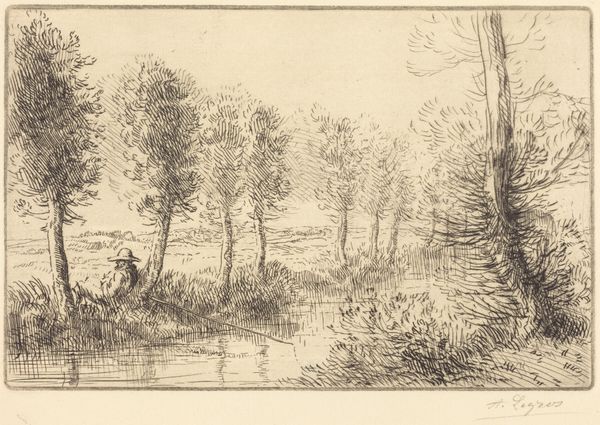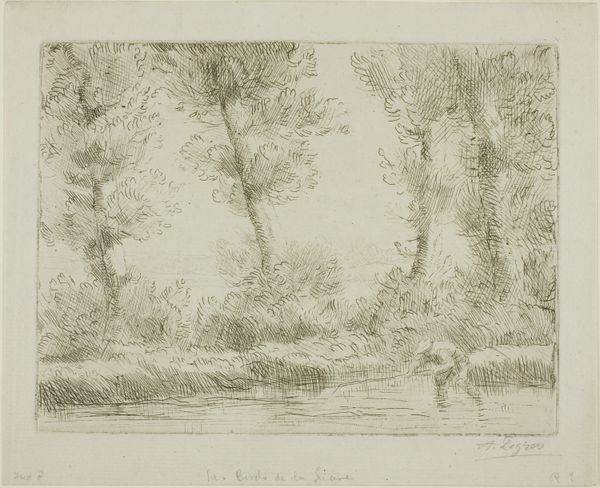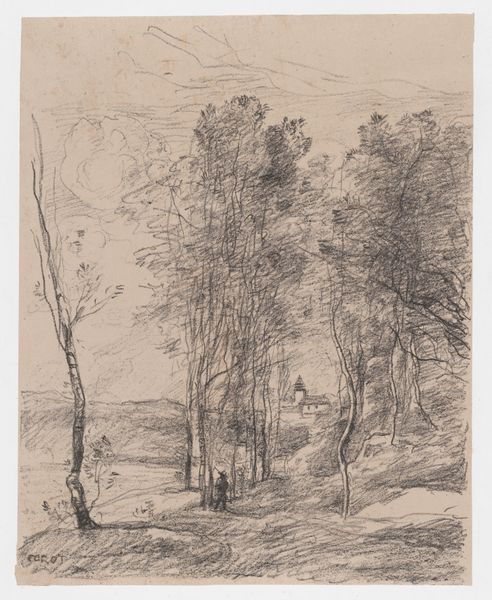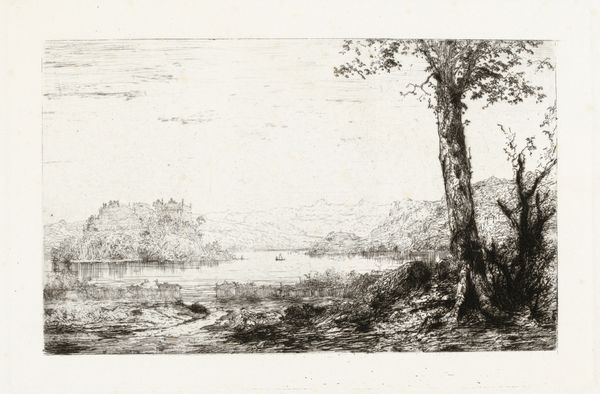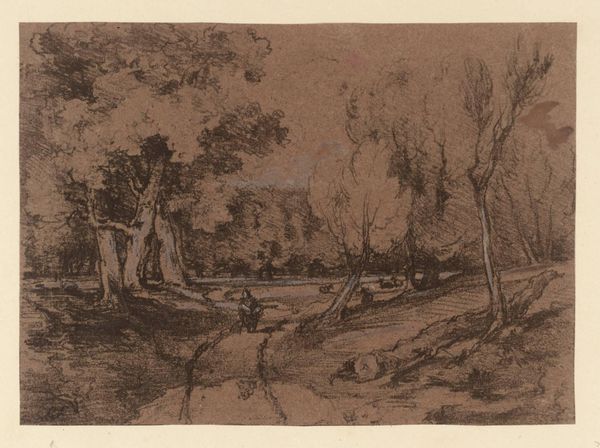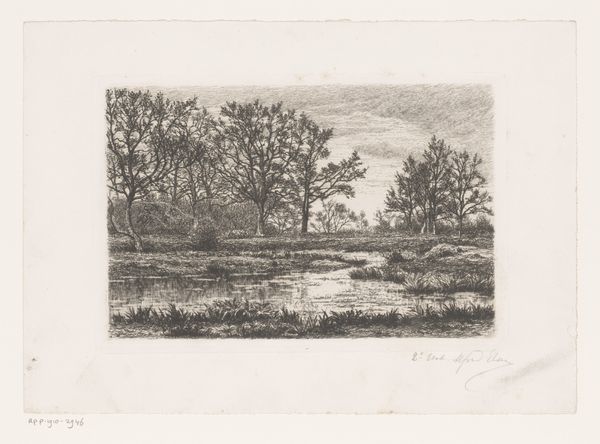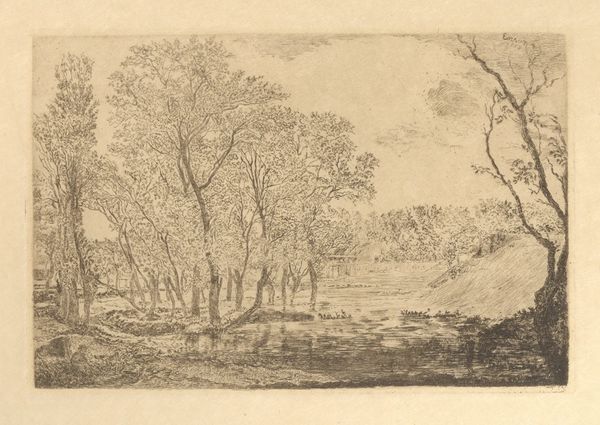
Dimensions: Sheet: 8 1/16 × 11 7/16 in. (20.4 × 29 cm) Plate: 5 15/16 × 8 in. (15.1 × 20.3 cm)
Copyright: Public Domain
Curator: Félix Bracquemond's 1858 etching, "Lac du Bois de Boulogne," gives us a glimpse into leisure and landscape in mid-19th century Paris. Editor: It has the air of a breezy, melancholic Sunday, don't you think? That thin, wispy etching technique lends it a real ethereal quality. Almost like a dream fading at the edges. Curator: Exactly! And look at how the etching lines vary, creating both depth and a kind of hazy atmosphere. The details, etched into the plate with acid, capture the textures of leaves, water, and fashionable dresses, revealing Bracquemond’s technical mastery. It's an impressive feat of craftsmanship. Editor: Right, the controlled degradation of the metal is so cool, isn't it? Consider what it represents: the chemical transformation mirroring, in a way, the social transformations happening as Paris became modern. Leisure itself was becoming a manufactured commodity. Curator: Interesting point! You can sense that newly available leisure in the composition itself – see those strolling figures and seated pairs? Bracquemond is hinting at how nature becomes a stage for social interactions. The Bois de Boulogne was intentionally redesigned around this time to become such a public park. Editor: I love that it's an etching, because to me it says something about how art was being democratized at the time. Printmaking allowed for wider circulation of images, reaching a broader audience than traditional paintings. Who gets to have "art" became less rarified thanks to processes like etching. Curator: Precisely. And Bracquemond, working in a period of evolving social structures, seemed determined to depict these moments, finding beauty in this meticulously crafted, mass-producible art form. There's something very moving in his engagement with this new artistic process. Editor: It really encapsulates an era where art and industry were colliding. Seeing the legacy of material shifts makes me appreciate the quiet moments of connection, captured through the meticulous control over the etching process even more deeply. Curator: Agreed! Bracquemond's landscape lets us observe not just the beauty of a Parisian park but the changing currents of society and artistic production.
Comments
No comments
Be the first to comment and join the conversation on the ultimate creative platform.
